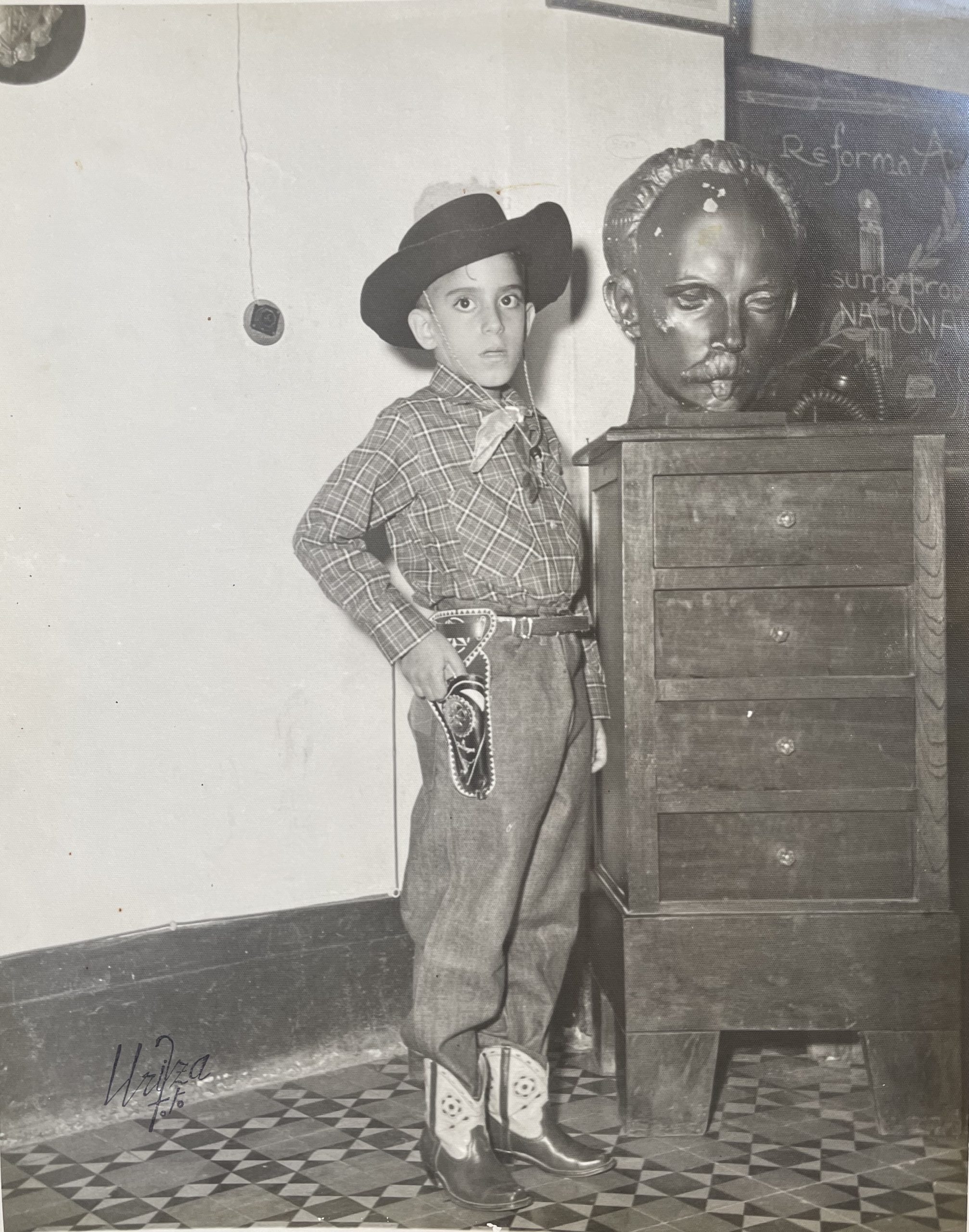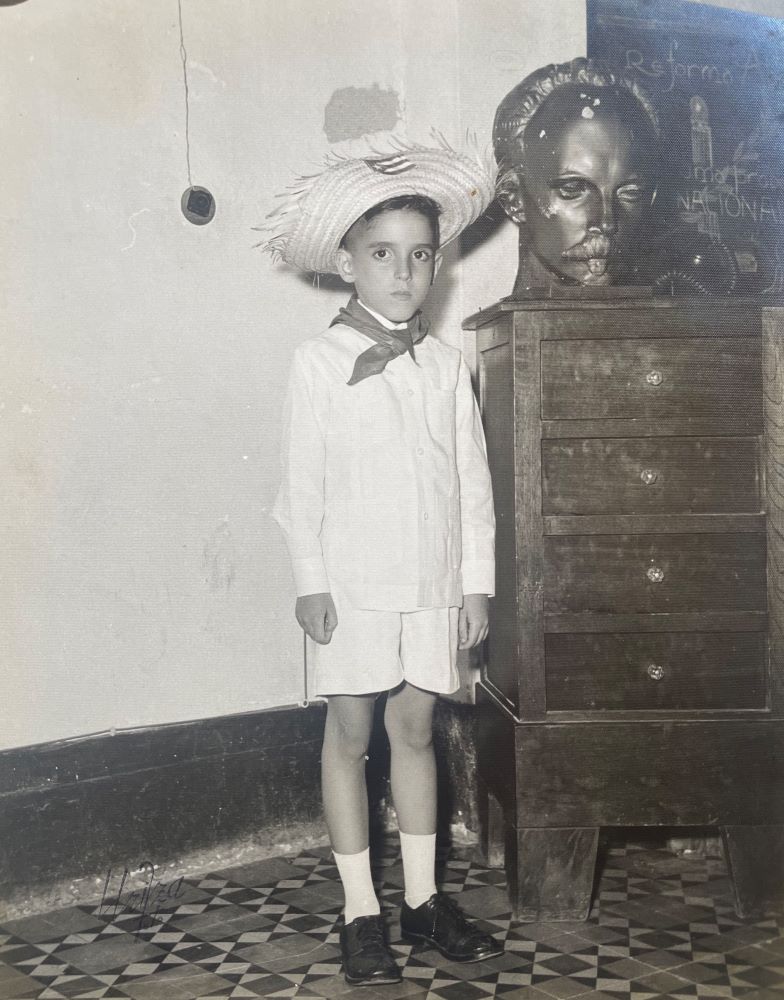Since the 1920s, Cubans have celebrated as a national holiday the birthday of José Martí, the nationalist writer and principal civilian leader of Cuba’s 1895 War for Independence from Spain. In 1953, however, the newly installed dictatorship of Fulgencio Batista presided over a yearlong series of events commemorating the Centennial of Martí’s birth rather than the democratic regime that had planned them. It included “Cuban Patriot Day” to be celebrated in public schools. Perhaps a reflection of Batista’s self-serving revisionist history of Cuba, schools continued to require children to dress up as “patriots” who had fought in the 1895 War for the Centennial every year. Private photographers, dispatched to record portraits of costumed kids, sold pictures like these as family keepsakes. In these portraits, my cousin Luisito dressed as a cowboy, and Diego dressed as a Cuban peasant rebel (mambí). When I first saw these pictures in 1997, I asked my cousin’s mom Norma why Luisito looked like John Wayne! She explained that their teachers had instructed her to make these costumes, and whether out of shyness or a subconscious sense of fear, she did not dispute the request, even though she thought it was, quite literally, insultante [insulting]. Was this an effort to make Batista’s primary political backers into “heroes” rather than enemies of Cuban democracy? After all, American soldiers were being given equal standing as Cuban “patriots” in this vision. Yet the US military had intervened in the war in spring of 1898 with the goal of transferring Cuba’s sovereignty from Spain to the United States in order to stop the revolutionaries—whom US officials deemed as racial inferiors—from governing a free Cuba. In the 1950s, the Eisenhower administration provided Batista with virtually the same thing: all the military “aid” he wanted and, for the most part, unconditional support for his deeply corrupt and morally bankrupt regime. Personal Collection of Lillian Guerra.

